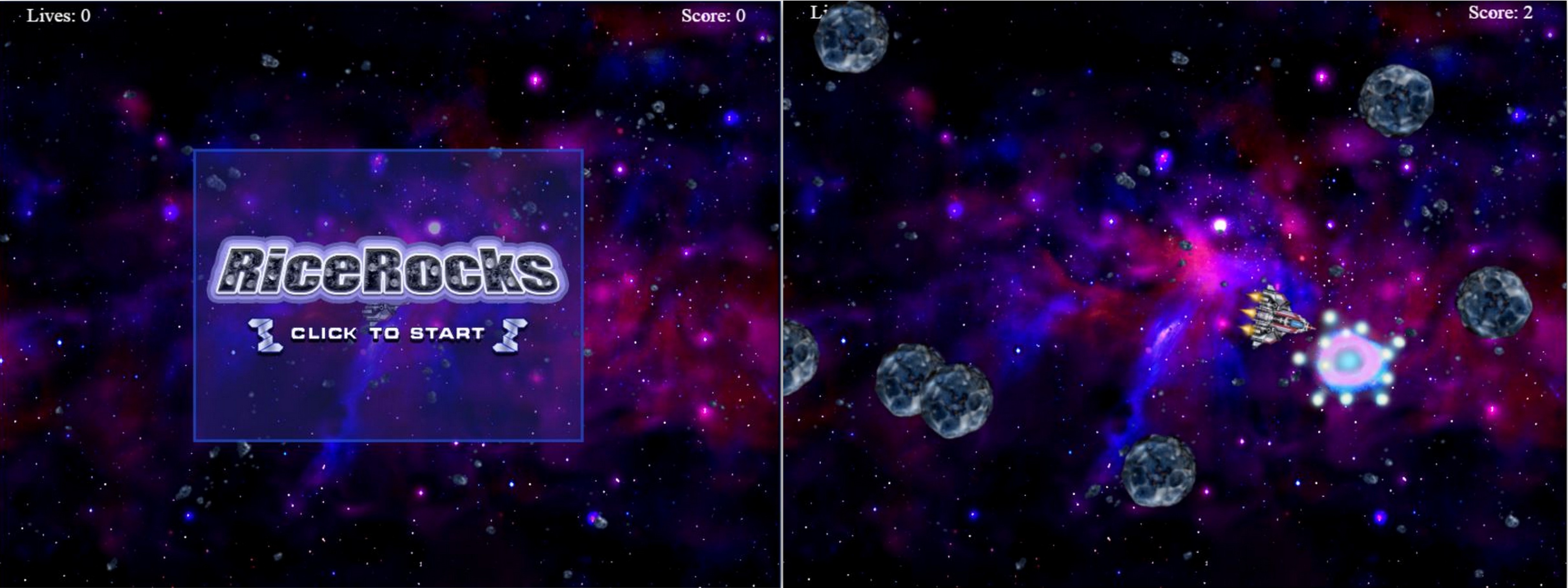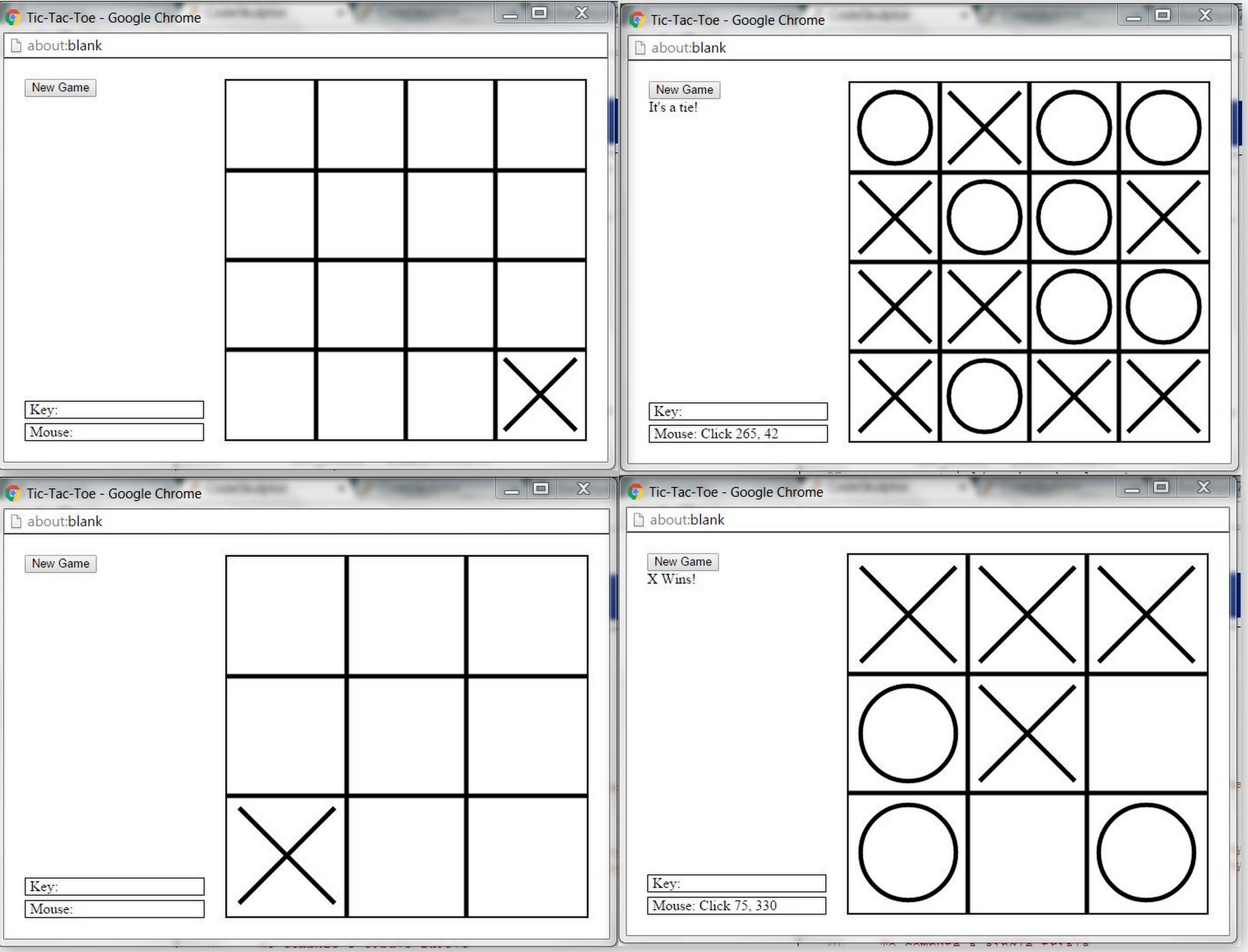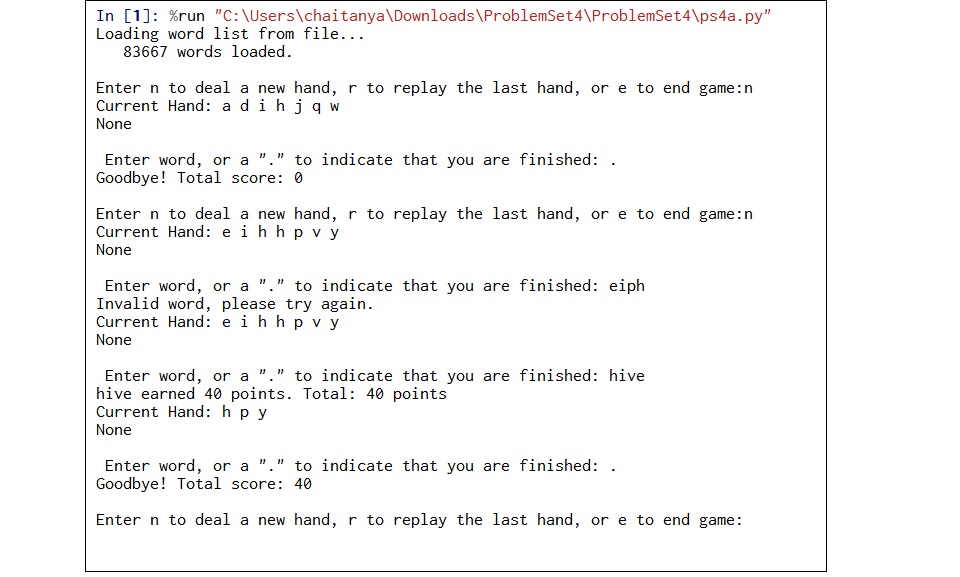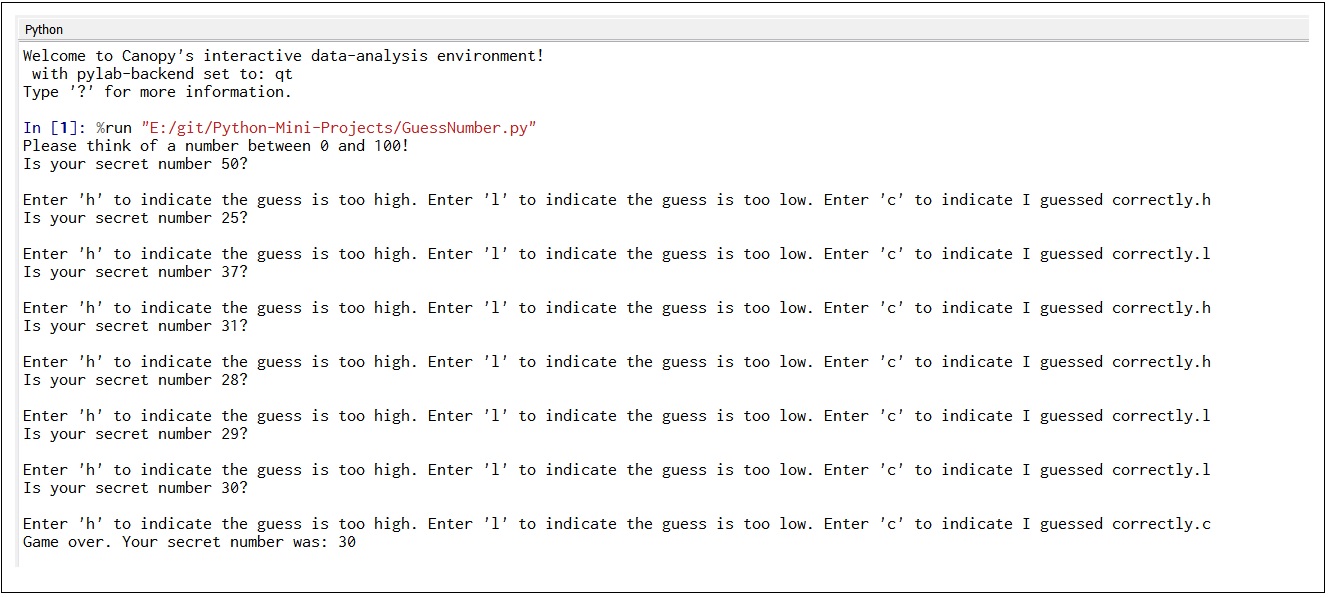1. Clone of 2048 Game:
2048 is a simple grid-based numbers game. The object of the game is to combine tiles with the same number to make larger numbered tiles. You "win" when you create a 2048 tile.
Code: code.
Screenshot of the Game:

2. RiceRocks (Asteroids):
Asteroids is an arcade space shooter released in November 1979 by Atari, Inc.The player controls a spaceship in an asteroid field. The object of the game is to shoot and destroy asteroids and not to collide with them. The game becomes harder as the number of asteroids increases.
Code: code.
Screenshot of the Game:

3. Tic-Tac-Toe (Monte Carlo):
Tic-Tac-Toe is a simple game played on a 3×3 grid. Players alternate turns placing an "X" or an "O" on an empty grid square. The first player to get three-in-a-row wins. If you know the appropriate strategy and your opponent does not, you cannot lose the game. Further, if both players understand the appropriate strategy the game will always end in a tie. An interesting variant of the game is "reverse" Tic-Tac-Toe in which you lose if you get three-in-a-row. The game is also more interesting if you play on larger square grids.
Code: code.
Screenshots of the Game:

4. BlackJack Game
Blackjack is a simple, popular card game that is played in many casinos. Cards in Blackjack have the following values: an ace may be valued as either 1 or 11 (player's choice), face cards (kings, queens and jacks) are valued at 10 and the value of the remaining cards corresponds to their number. During a round of Blackjack, the players plays against a dealer with the goal of building a hand (a collection of cards) whose cards have a total value that is higher than the value of the dealer's hand, but not over 21. (A round of Blackjack is also sometimes referred to as a hand.)
Code: code.
Screenshot of the Game:
5. Memory Game
Memory is a card game in which the player deals out a set of cards face down. In Memory, a turn (or a move) consists of the player flipping over two cards. If they match, the player leaves them face up. If they don't match, the player flips the cards back face down. The goal of Memory is to end up with all of the cards flipped face up in the minimum number of turns. A Memory deck consists of eight pairs of matching cards.
Code: code.
Initial Phase:
Final Phase:
6. Pong Game :
The classic arcade paddle ball game. My version is for 2 players. Up and Down arrow keys control the right paddle and the W and S keys control the left paddle.
Code: code.
Screenshot of the Pong Game in action:
7. Stopwatch Game :
This stopwatch Game is a test of reflexes.It keeps track of the number of times that you have stopped the watch and how many times you manage to stop the watch on a whole second (1.0, 2.0, 3.0, etc.)
Code: code.
Screenshot of the Stopwatch Game in action:
8. Room Cleaning Robot :
iRobot is a company (started by MIT alumni and faculty) that sells the Roomba vacuuming robot (watch one of the product videos to see these robots in action). Roomba robots move around the floor, cleaning the area they pass over. In this Mini-Project i coded small simulation to show how a Roomba-like robot will clean the floor of a room using two different strategies.
Code: code.
Screenshot of the robot in action :
.
9. Word Game :
This game is a lot like Scrabble or Words With Friends, if you've played those. Letters are dealt to players, who then construct one or more words out of their letters. Each valid word receives a score, based on the length of the word and the letters in that word.
Code: code.
Screenshot of the Word Game:
 .
.
10. Guess Number :
The program works as follows: you (the user) thinks of an integer between 0 (inclusive) and 100 (not inclusive). The computer makes guesses, and you give it input - is its guess too high or too low? Using bisection search, the computer will guess the user's secret number!
Code: code.
Screenshot of the robot in action :
 .
.